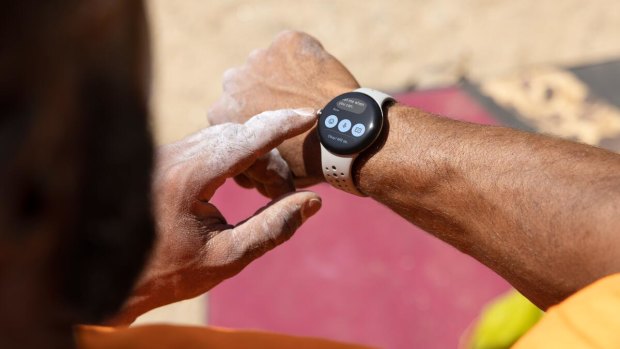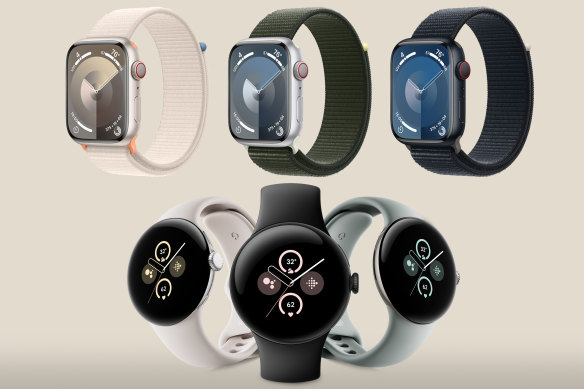
With the introduction of the Apple Watch Series 9 and the Google Pixel Watch 2 in recent months, both tech giants have new advanced wearables they’re positioning as vital health-tracking counterparts to their smartphones.
Comparing the two in terms of which is better is a bit redundant, since the former only works with iPhones while the latter only works with Android phones, so most people will only have one of them as a viable option. The more interesting comparison is how much utility each offers to users of the respective platforms; is the Pixel Watch 2 finally an Apple Watch analogue for Android fans?

Google’s Pixel Watch 2 is a vast improvement from the original in features and battery life.
In terms of tech specs and health-tracking credentials, the devices are certainly very close. Both have an array of sensors that will measure and record your heart rate, sending you notifications if it dips or heightens unexpectedly. Both track your steps, and will record stats like pace and laps for various activities. Both also have ECG capabilities and can alert you to irregular heart rhythm. The Pixel is a bit better at detecting and starting workouts, but the Apple has more options for defining custom routines.
Apple’s method of displaying your daily fitness goals in three rings — Move, Exercise and Stand —makes it easy to see how you’re doing at a glance. The Pixel Watch, which is tied to the Google-owned Fitbit when it comes to fitness, is a bit more modular and less streamlined. You earn points for minutes spent in fat-burning “zones”, and can set goals for how many steps you’d like to take or how many hours each day should include exercise.
Fitbit is certainly better at taking measurements and presenting them as analytics, for example measuring your blood oxygen (which the Apple Watch also does) and turning it into a cardio fitness score. Both watches also track sleep and keep tabs on things like breathing rate, but Fitbit crunches it all into a “Daily Readiness” score to let you know how hard you should work out each day. However, this (and many other features) are behind a paid Fitbit subscription, whereas Apple only charges extra for guided workout routines via Fitness+.

The Apple Watch Series 9 (top) isn’t as futuristic looking as the Pixel Watch 2, but it feels hardier.
Outside of fitness but still in the general area of health, both watches offer period tracking and mindfulness activities, though the Pixel Watch has skin temperature and electrodermal sensors that it uses to measure stress responses and prompt you to log your mood throughout the day. Both devices also have safety features like fall detection and emergency calling.
Where the Apple Watch offers a clearly superior experience is outside of the health features and in ordinary everyday use. Navigation is snappier, the display is brighter and sharper, faces are more customisable and there are a lot more options for apps. Both watches are great for seeing your messages, calls and notifications come in, and can even work sans phone if you pay extra for the cellular versions, but the Apple is richer in the kinds of interactions you can perform with the watch alone.
The Pixel has the longer battery life, but neither device is making it past 24 hours with the always-on display activated, so you still need to charge daily or keep a battery-saving mode turned on.



























